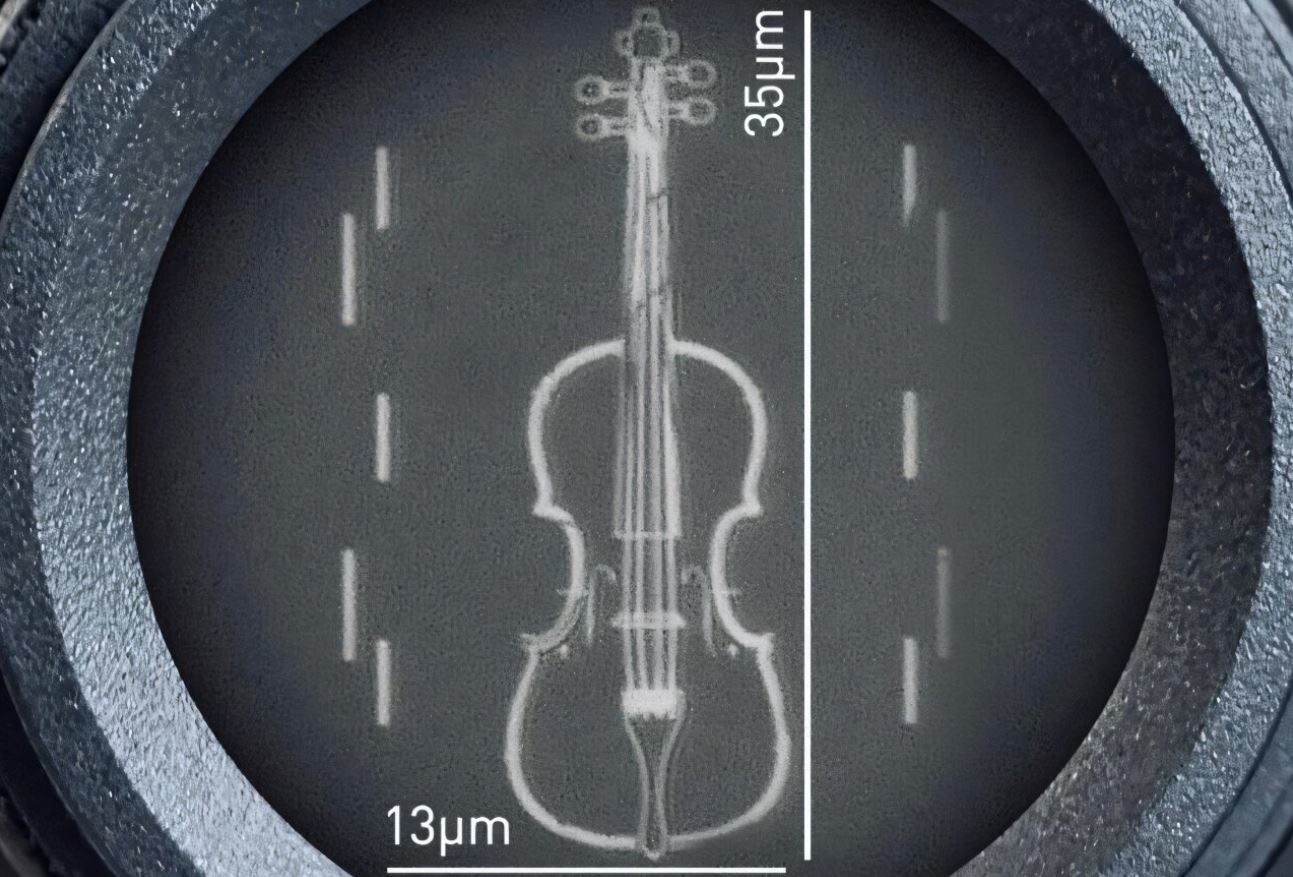 At Loughborough University, physicists have shown that sometimes the smallest things can have a huge impact. Their latest creation—a platinum-based violin measuring only 35 microns in length and 13 microns in width—proves that nanotechnology isn’t just about miniaturisation; it’s about precision and creativity. While this tiny violin isn’t meant to be played, it stands as a striking demonstration of what can be achieved with modern nanolithography.
At Loughborough University, physicists have shown that sometimes the smallest things can have a huge impact. Their latest creation—a platinum-based violin measuring only 35 microns in length and 13 microns in width—proves that nanotechnology isn’t just about miniaturisation; it’s about precision and creativity. While this tiny violin isn’t meant to be played, it stands as a striking demonstration of what can be achieved with modern nanolithography.
Professor Kelly Morrison, who leads the Physics department, explains that their advanced nanolithography system allows experiments to be run by using light, magnetism, or electricity to probe materials. If you’ve ever struggled with the limitations of modern tech—especially when it comes to energy efficiency—this breakthrough hints at future improvements in computer chips and energy harvesting technologies.
The process starts with a small chip coated with two layers of a gel-like resist. Using a NanoFrazor machine with a heated tip reaching between 75 and 2012°F, the team etched a delicate violin shape onto the chip. Next, a selective dissolve of the underlayer creates a violin-shaped cavity, onto which a thin layer of platinum is deposited. A final acetone rinse removes any excess material, leaving a structure that can only be examined under a microscope.
Working at such a minuscule scale means every step must be executed in a contaminant-free setting. Though the “world’s smallest violin” is a playful nod to a familiar pop culture phrase used to mock trivial complaints, the research behind it is anything but trivial. The methods developed here are paving the way for more efficient, faster electronics—especially in managing the heat these devices often waste.
Looking forward, the Loughborough team is busy exploring new projects aimed at miniaturising next-generation electronics. Dr Fasil Dejene is investigating quantum materials that might one day replace current magnetic storage, potentially leading to memory devices that are smaller, faster, and more reliable. Professor Morrison sums it up nicely: creating the world’s tiniest violin may seem light-hearted, but the insights gained are vital in overcoming obstacles in modern digital technology.








